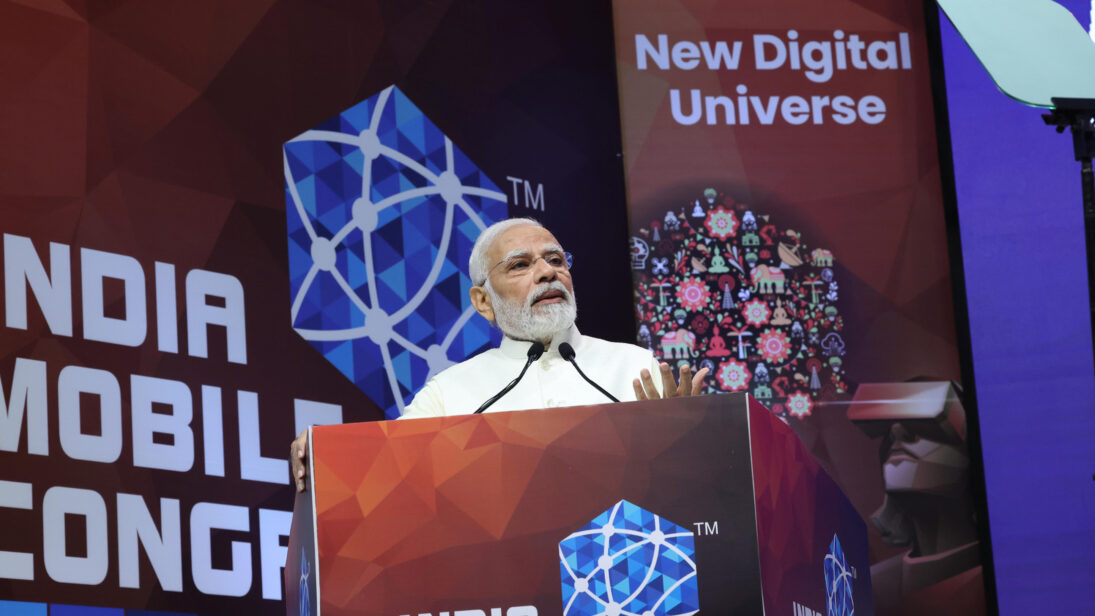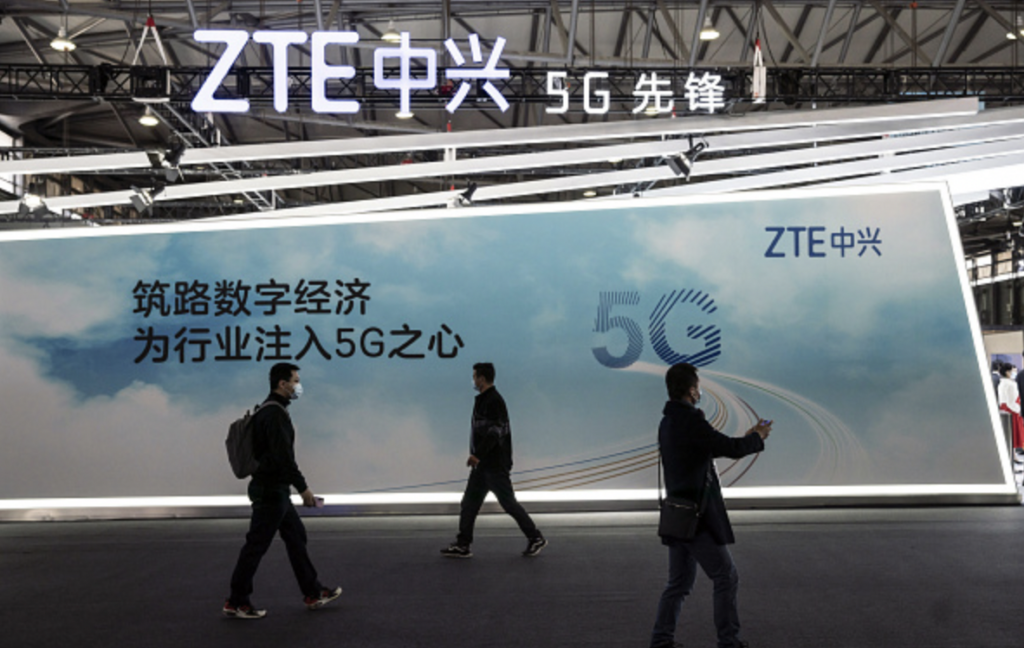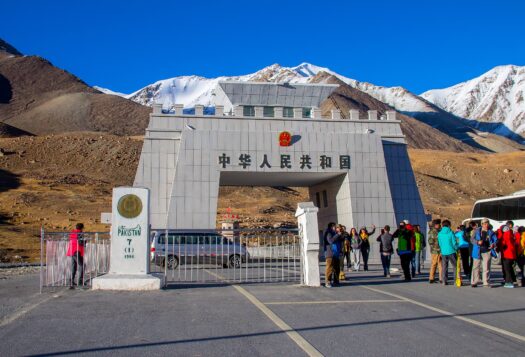
On October 1, India’s Prime Minister Narendra Modi declared that 1.3 billion Indian citizens would soon be able to use fifth-generation (5G) wireless technology for high-speed internet services across the country. Leading Indian telecom companies Reliance Industries, Bharti Airtel, and Vodafone are already in the race to deploy the new technology. Modi also announced that India would play an active role in the innovation and manufacture of 5G technology—compared to only being a consumer previously.
While India has increasingly viewed China as the leading competitor in Asia, China’s experience deploying 5G across a vast country of billions can offer valuable lessons for India. China has worked on 5G for nearly ten years, beginning promotion groups for 5G technologies in 2013 and Research and Development in 2016. However, China’s journey has not been without its obstacles—particularly facing pushback from various Western countries due to privacy, intellectual property, and security concerns. India should look at China’s growth in 5G because of China’s rapid growth rate and expansion of the role of 5G technology in multiple sectors, such as communications, healthcare, manufacturing, and industry. While India has continued to compete with China in the region, there are points India can learn from China’s deployment of 5G technologies—such as how different levels of government cooperate and how funds are allocated to keep up a fast pace of 5G deployment. India also has advantages where China does—most notably in the potential partnerships with foreign countries amidst ongoing concerns over China’s 5G rise.
China’s Strides in 5G
China has placed a significant focus on improving the digital economy. Xi Jinping’s recent speech on the matter emphasized China’s advancements through technological development in big data, cloud computing, artificial intelligence, and blockchain. This aligns with Xi’s vision of the vast expansion of China’s digital economy by 2025—as outlined in the 14th Five-Year Plan for National Informatization released in December 2021.
While India has increasingly viewed China as the leading competitor in Asia, China’s experience deploying 5G across a vast country of billions can offer valuable lessons for India.
China released its State Council’s fifth-generation mobile communications infrastructure guidelines early this year. Chinese mobile operators have planned to invest around $138 billion in their networking systems between 2022-2025, out of which 88 percent is intended to be dedicated to 5G. The guidelines’ vision discussed the deployment and application of 5G networks and encouraged officials to plan a layout for the 6G technology research and development. China has made straightforward advances in emerging technologies, 5G being one of its top priorities. India, meanwhile, is still at a nascent stage in 5G deployment.

It is expected that China will have two million 5G base stations by the end of this year. In 2021, the U.S. giant Apple introduced 5G-enabled smartphones to the Chinese market. However, it did not take much time for domestic producers to catch up. Currently, the leading telecom operators involved in 5G network rollouts include China Mobile, China Telecom, and China Unicorn. Infrastructural pursuits are at an all-time high, with even local governments in provinces launching their construction plans for 5G infrastructure. China’s provincial-level governments have implemented a practical top-down approach to distributing funds and bureaucratic cooperation with their local counterparts. In India, subjects are divided into three lists; Union, State, and Concurrent. The Central government handles crucial portfolios such as defense and communications in the Union List. As 5G deployment will be a subject of the Union List, the Central Government will take the major decisions. However, the funds allocated to the States may not reach them in a timely manner, resulting in a possible unequal or delayed deployment of 5G networks. This will further increase the rural and urban divide and the economic growth opportunities that can come with 5G services.
In addition to the telecom sector, India’s health sector can use 5G technologies as China did during the COVID-19 pandemic. Devices using 5G have been used to evaluate the health status of potentially infected people or measure changes in the body during the quarantine period, and 5G-powered temperature measuring gadgets were used from a ten-meter distance. Highly advanced techniques such as remote ultrasound and remote CT scanning were also possible due to a combination of 5G technology and artificial intelligence. Implementing 5G technologies could revolutionize the healthcare sector in India. However, funding will be required for high-end machinery, which could be a challenge for India. During the second wave of the COVID-19 pandemic, India suffered when a shortage of funds and infrastructure crippled its healthcare system.
Way Forward for India
China’s 5G technology has faced significant pushback from the international community, especially in Western countries. Chinese tech giants, including Huawei and ZTE, have been banned by the United States—appearing numerous times in the U.S. Entity Lists in 2019. Huawei has been accused of spying and stealing intellectual property. The United States had not only banned Huawei but also stated that it would not be able to cooperate in certain areas or engage in intelligence sharing with countries using Huawei equipment due to security risks. The UK followed suit and banned Huawei’s use in 5G infrastructure in 2020. Despite limitations, however, Huawei has maintained its position as the most prominent private entity spending on Research and Development in China—although it has lost its top spot in terms of revenues. Chinese internet companies continue to be among the nation’s leading innovators despite a year-long government crackdown on private companies that hindered growth and reduced payments. That is a considerable achievement for China despite the ban and sanctions—even as India competes with China, it is worthwhile to recognize what areas it can learn from.
Given their stronger relationship, the United States and India may have opportunities to collaborate on 5G technologies in the future. Both nations might cooperate to speed up the development and commercialization of technological solutions. Entrepreneurship, skill development and trade in Information and Communication Technology (ICT) could be strengthened between the two countries. However, the United States might have been a reason why India did not include Huawei in its trials and hence, could not start trials earlier. Price-competitive Huawei could have helped the cash-strapped telecom sector of India.
Given their stronger relationship, the United States and India may have opportunities to collaborate on 5G technologies in the future. Both nations might cooperate to speed up the development and commercialization of technological solutions.
Huawei and ZTE are private telecom companies that lack technical experience and knowledge in the industrial and service arenas. India could take note of this and include companies with a presence in manufacturing, healthcare, financial services, outsourcing and agriculture. These include Infosys, Wipro Ltd, Serum Insititute of India, Bajaj Finances Ltd, and UPL Ltd, among others. To do this, India must support close communication between different types of government and private companies. To enhance cooperation, they could have a set of people from various companies working towards multiple goals together. Existing Public-Private Partnership frameworks can come into play a part in the deployment.
India is on a technological path which could create history. All major telecom companies have made mighty promises to India, and Prime Minister Modi’s ambitions for a Digital India are in full stride. However, what Indian mobile giants bring in for 5G deployment in India is yet to be seen.
***
Image 1: Press Information Bureau, Prime Minister’s Office via Government of India


